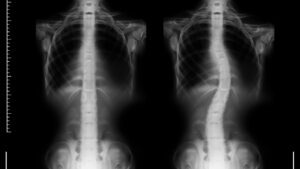
Stretching is often seen as a non-negotiable part of a fitness routine. Whether you’re a gym enthusiast heading to a workout, going for a run, or stepping onto a yoga mat, you’ve probably been told to stretch first. But what if the way you’re stretching is actually doing more harm than good?
Most people don’t realise that there’s a right and wrong way to stretch, especially before a workout. And unfortunately, many are still following outdated advice that could be setting them up for injury or reducing their performance potential.
Static stretching might not be the warm-up you think it is
For years, static stretching — holding a position for 20 to 30 seconds — was the go-to warm-up method. Touching your toes or holding a quad stretch felt like the responsible thing to do before a workout. However, recent research suggests that static stretching before exercise could actually decrease strength and power temporarily.
Muscles need to be activated and warmed up, not relaxed and lengthened for extended periods. When you hold a static stretch, your muscles lose some of their elasticity, which can reduce explosive strength. This is particularly problematic if you’re preparing for a high-intensity workout or any form of sport that requires quick bursts of movement.
Dynamic stretching prepares your body for movement
If static stretching isn’t ideal, what’s the alternative? Enter dynamic stretching. Unlike its static counterpart, dynamic stretching involves active movements that gently take your muscles and joints through their full range of motion. Think of leg swings, walking lunges, arm circles, or torso twists — movements that closely mimic the actions you’ll be performing in your workout.
Dynamic stretching increases blood flow, raises body temperature, and activates the nervous system. It tells your body, “We’re getting ready to move,” which is exactly what a warm-up should do. Not only does it improve flexibility in a more functional way, but it also helps reduce the risk of strains and sprains.
Common mistakes that lead to injury
Stretching with good intentions is still not enough. The type, duration, and sequence of stretches all play a role. Here are a few common pre-workout stretching mistakes to look out for:
- Overstretching cold muscles: Muscles that haven’t been warmed up yet are more prone to tears. Dynamic movements should precede any deeper stretching.
- Ignoring tight or painful areas: Many people stretch their favourite muscle groups but avoid areas that feel tight or sore. This can lead to imbalances and increase the risk of injury.
- Rushing through the warm-up: A few quick arm circles and toe touches are not enough. A proper dynamic warm-up should take at least 5 to 10 minutes.
Ignoring proper technique in your warm-up could eventually lead to chronic issues. If you’re experiencing recurring discomfort, such as persistent tightness or pain that doesn’t resolve, it may be time to speak to a lower back pain specialist or neck pain specialist who can assist with assessing the root cause.
Not all stretches are created equal
Different workouts call for different types of stretching. A warm-up before a weightlifting session might include dynamic squats and shoulder rolls, while a warm-up for running could involve high knees, butt kicks, and hip openers.
Understanding the demands of your workout will help you tailor your stretching routine to suit it. The goal should always be to enhance your performance, not hinder it.
And don’t forget: what works for someone else may not work for you. If you have existing mobility issues or previous injuries, it’s essential to modify stretches accordingly — ideally with professional guidance.
Stretching after your workout matters too
While dynamic stretching is best for pre-workout, post-workout is the time for static stretching. Once your body is warm and your muscles have been used, static stretches can help improve flexibility and aid in recovery.
This is also the ideal time to focus on areas of tension or tightness. Stretching after your workout can help prevent soreness and keep your muscles supple and healthy.
If you’re dealing with persistent discomfort in your back or neck after exercising, there may be underlying issues that stretching alone can’t fix. Consulting a chiropractor can help you understand if structural misalignments or muscle imbalances are at play.
Listen to your body and adapt accordingly
The takeaway? Stretching isn’t one-size-fits-all. The way you prepare your body for movement matters — and choosing the right method, such as stretch therapy, can dramatically reduce your risk of injury while boosting your performance.
Tune into how your body feels during and after your workouts. Are your muscles feeling sluggish after stretching? Are you frequently sore in the same areas? Are you noticing reduced range of motion? These are signs that your current routine might not be serving you well.
Conclusion
Don’t fall into the trap of thinking more stretching is always better. Focus on smarter, more intentional movement patterns that support your fitness goals.
To learn more about how proper stretching and spinal alignment can enhance your workout performance and overall health, visit Healing Hands Chiropractic. Our team offers professional insights and personalised care that go beyond basic stretches, helping you move better, feel better, and avoid injury.


